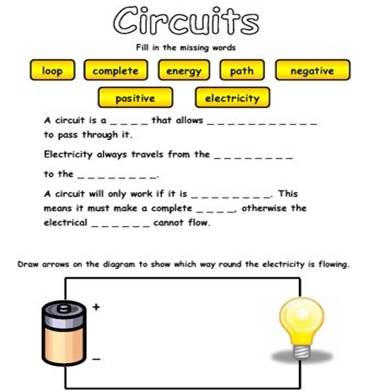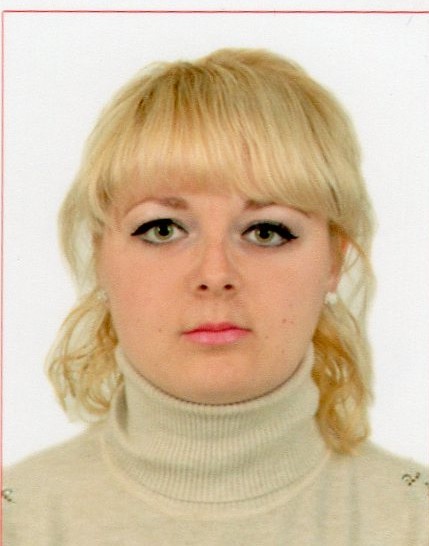Инструкционная карта № 10
на выполнение практического занятия по ОГСЭ.03 Иностранный язык
для обучающихся специальности 35.02.08 Электрификация и автоматизация сельского хозяйства
Тема: Электрический ток.
Цель: Ознакомиться с лексикой по теме: Электрический ток.
Образовательная: совершенствовать навыки чтения, письма умений работать со словарем, навыков перевода узкой направленности, формировать коммуникативную иноязычную компетенцию ,необходимую для успешной социализации и самореализации как инструмента межкультурного общения в современном поликультурном мире, формировать умения использовать английский язык как средство для получения информации из англоязычных источников в образовательных и самообразовательных целях.
Воспитательная: формировать ценностное отношение к языку как культурному феномену и средству отображения развития общества, его истории и духовной культуры, формировать готовность и способность вести диалог на английском языке с представителями других культур, достигать взаимопонимания, находить общие цели и сотрудничать в различных областях для их достижения .
Развивающая: совершенствовать умения выбирать успешные коммуникативные стратегии в различных ситуациях общения навыков проектной деятельности, моделирующей реальные ситуации межкультурной коммуникации.
Компетенции,умения и навыки,которыми должны овладеть обучающиеся:ОК3, ОК4.
Обучающийся должен уметь:
пользоваться словарями;
самостоятельно совершенствовать устную и письменную речь;
пополнять словарный запас,
общаться устно и письменно на иностранном языке;
переводить со словарем иностранные тексты.
Норма времени: 2 ак.час.
Оснащение рабочего места: англо-русский и русско- английские словари ,раздаточный материал(карточки с раздаточным материалом ,комплект инструкционно -технологических карт ,посадочные места по количеству обучающихся ;рабочее место преподавателя
Литература:
1. Голицынский, Ю.Б. Грамматика: Сборник упражнений. – 7-е изд., испр. к доп.–/ Ю.Б. Голицынский. – Спб.: Каро, 2019.–576 с.
2. Галкина А. А.. Английский язык для бакалавров электротехнических специальностей / А. А. Галкина – Ростов н/Д: Феникс, 2019. – 235 с.
Вопросы для актуализации опорных знаний:
What do you know about Present tenses?
What do you know about electricity?
What do you know about Future Simple and Future Continuous?
Теоретические сведения
Ход работы.
Task №1. Translate the text into Russian.
Electric current
The movement of electric charge is known as an electric current, the intensity of which is usually measured in amperes. Current can consist of any moving charged particles; most commonly these are electrons, but any charge in motion constitutes a current. Electric current can flow through some things, electrical conductors, but will not flow through an electrical insulator.
By historical convention, a positive current is defined as having the same direction of flow as any positive charge it contains, or to flow from the most positive part of a circuit to the most negative part. Current defined in this manner is called conventional current. The motion of negatively charged electrons around an electric circuit, one of the most familiar forms of current, is thus deemed positive in the opposite direction to that of the electrons. However, depending on the conditions, an electric current can consist of a flow of charged particles in either direction, or even in both directions at once. The positive-to-negative convention is widely used to simplify this situation.
An electric arc provides an energetic demonstration of electric current
The process by which electric current passes through a material is termed electrical conduction, and its nature varies with that of the charged particles and the material through which they are travelling. Examples of electric currents include metallic conduction, where electrons flow through a conductor such as metal, and electrolysis, where ions (charged atoms) flow through liquids, or through plasmas such as electrical sparks. While the particles themselves can move quite slowly, sometimes with an average drift velocity only fractions of a millimetre per second, the electric field that drives them itself propagates at close to the speed of light, enabling electrical signals to pass rapidly along wires.
In engineering or household applications, current is often described as being either direct current (DC) or alternating current (AC). These terms refer to how the current varies in time. Direct current, as produced by example from a battery and required by most electronic devices, is a unidirectional flow from the positive part of a circuit to the negative. If, as is most common, this flow is carried by electrons, they will be travelling in the opposite direction. Alternating current is any current that reverses direction repeatedly; almost always this takes the form of a sine wave. Alternating current thus pulses back and forth within a conductor without the charge moving any net distance over time. The time-averaged value of an alternating current is zero, but it delivers energy in first one direction, and then the reverse. Alternating current is affected by electrical properties that are not observed under steady state direct current, such as inductance and capacitance. These properties however can become important when circuitry is subjected to transients, such as when first energised.
Task №2. Write down all words.
universal [juːnɪˈvɜːsəl] универсальный
replaced transmission - замененная коробка передач
shafts- валы
gear wheels- зубчатые колеса
appliances- приборы
specific properties- [spɪˈsɪfɪk ˈprɒpətɪ] специфическое свойство определенное свойство
consumption- [kənˈsʌmpʃn] потребление, расход
by product [baɪ ˈprɒdʌkt] побочный продукт субпродукт
provides mankind- обеспечивает человечество
Task №3
1. Прочитать текст.2. Выполнить адекватный перевод.3. Составить краткую аннотацию текста.4. Задать к тексту 5 специальных вопросов.
Требования к составлению аннотации:
1. Прочитать и понять основное содержание текста.2. Найти ответы на вопросы в тексте.
3.Перевести предложения, содержащие конструкции с пассивным залогом.
4.Выбрать из текста несколько ключевых фраз и составить по ним аннотацию текста.

Task №4 Вставить правильную форму глагола.
1) The mechanic (is repairing / was repairing) the engine now.
2) He (measured, will measure) electrical power 2 hours ago.
3) A new power station (is built / will be built) in the nearest future.
4) Now all substances (is, are) good conductors of electricity.
5) Battery cells (have, has) dry cells and wet cells.
Task 4 (а). Сгруппировать синонимы
Different, not far, end, great, near, finish, various, huge, step up, increase, section, part, step down, decrease.
Task 4 (b). Переведите на английский язык.
Электрический ток, проводник, вольтметр, сопротивление, медный провод, конденсатор, передача энергии, генератор.
Task №5. Choose the right present form.

Контрольные вопросы:
What industrial applications of electricity do you know?
What home applications of electricity do you know?
Why have our lives been completely transformed with the appearance of electricity?

4



























